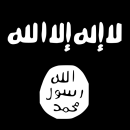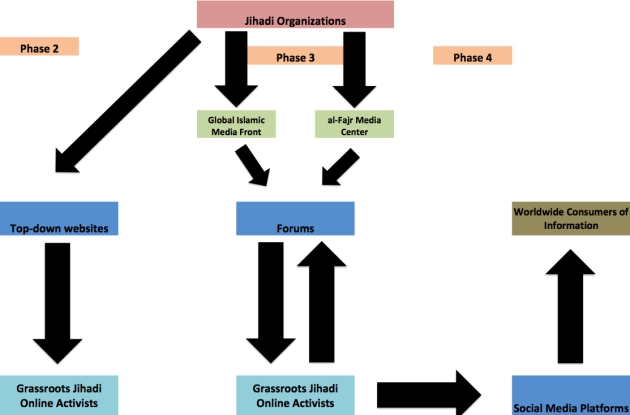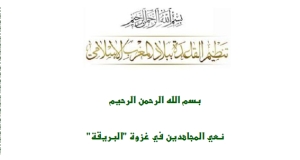Much has been talked and written about in popular discourse regarding religion, Islam, and the rise of Islamists and Salafis following the uprisings in the Middle East and North Africa during the past year. The elections in Tunisia and especially in Egypt upended some assumptions researchers have had regarding Salafi participation in elections. Prior to the elections in Egypt, the al-Nur Party was categorically against participation in elections. According to Salafi doctrine, democracy is considered a religion, a polytheistic one where legislators are idols that infringe upon God’s sole sovereignty over mankind. Of course, not all Salafis will necessarily break from this doctrine as al-Nur has. That said, it should make one pause when thinking about how one categorizes in a social scientific sense religious groups and religiously-inspired social movements. The uprisings have created a paradigm shift in some of the MENA societies, broken long-engrained taboos, and given space to previously unexposed ideas. It is quite possible that what one thought before regarding these movements may no longer apply or is analytically more fluid due to a change in circumstance and the potential to gain from it. Therefore, this short article hopes to look at these changes through the lens of Norwegian-based jihadism studies expert Thomas Hegghammer’s preference-based analysis of Islamism.
Click here to read the rest.Category: al-Wasat
Check out my new post at al-Wasat: "On Flags, Islamic History, and al-Qa’ida"
After writing my post on Libya, AQIM, and the spotting of a flag that appeared to be al-Qa’ida in Iraq’s (AQI) hanging over a court building in Benghazi there has been much written over the past few days regarding this flag as well as one waved at a rally also held in Libya that showed the Islamic State of Iraq’s (AQI’s successor group) flag.[1] Earlier this morning, it sparked an interesting debate between Ed Husain and Will McCants on Twitter. The flags in question were the following two:
 al-Qa’ida in Iraq’s flag. This was the one that appeared on top of the court house in Benghazi.
al-Qa’ida in Iraq’s flag. This was the one that appeared on top of the court house in Benghazi.
 Islamic State of Iraq’s flag.
Islamic State of Iraq’s flag.
–
Husain contended that one should not describe this flag as an “al-Qa’ida flag,” stating: “By calling it AQ flag we give them what is not theirs. The Prophet used those colours in his raids against pagans.” On the other hand, McCantsargued that Muhammad may have used similar colors (i.e. black and white), but no other Islamic movement uses the exact same styled flag as the Islamic State of Iraq. Husain mentioned Hizb ut-Tahrir (HuT) as a counter example, yet that does not hold up to scrutiny, see:
 Hizb ut-Tahrir’s flag
Hizb ut-Tahrir’s flag
–
Indeed, in the case of the AQI and HuT flags they both use black as the background and contain theshahada (Islamic testament of faith: ‘There is no God, but God; and Muhammad is the Messenger of God’). While the Islamic State of Iraq’s only has the first half of the shahada at the top while on the bottom is the seal that Muhammad used in official documents. They all differ a bit though since they have different styled typeface. Further, if one were to contend as Husain did that “we” are giving al-Qa’ida something that is not theirs then we should look back and see what flags the Muslim prophet Muhammad actually used as well as the Rashidun Caliphate, Ummayad Caliphate, and the Abbasid Caliphate.
Click here to read the rest.
Check out my new post at al-Wasat: "Inchoate Conceptualization of Jihadi Online Media"
 Over the past 15 years there has been an enormous shift in the ownership of production and consumption of jihadi media. During the mid-90s through 2003/2004 jihadi groups had a monopoly on who produced and disseminated jihadi materials online, which allowed al-Qaeda and other organizations to continue to be more elitist in nature. The parallel onset of the forums with the rise of Abu Mus’ab al-Zarqawi somewhat evened the playing field. The forums allowed administrators (who were connected with jihadi organizations) to still have somewhat of a monopoly over what was posted on the forums by deleting threads or banning members, but individuals online who were not connected in a first degree manner to al-Qaeda or other jihadi organizations could now not only consume what was posted by administrators, but comment in those threads as well as post their own content that they came across or originally produced as well. The most recent Web 2.0 innovations and creation of social media platforms has completely upended the old monopolized control over the production of online jihadi media. As a result, the ideology of global jihadism is no longer an elitist clique, but has been appropriated at a social movement level, albeit at the fringe. Social media platforms have created global jihadi entrepreneurs of news items, originals articles and essays, tribute videos and anashid, etc. Therefore, over time, due to newer technologies being adopted the bar became lowered for being able to participate and be a part of the global jihadi movement.
Read the rest here.
Over the past 15 years there has been an enormous shift in the ownership of production and consumption of jihadi media. During the mid-90s through 2003/2004 jihadi groups had a monopoly on who produced and disseminated jihadi materials online, which allowed al-Qaeda and other organizations to continue to be more elitist in nature. The parallel onset of the forums with the rise of Abu Mus’ab al-Zarqawi somewhat evened the playing field. The forums allowed administrators (who were connected with jihadi organizations) to still have somewhat of a monopoly over what was posted on the forums by deleting threads or banning members, but individuals online who were not connected in a first degree manner to al-Qaeda or other jihadi organizations could now not only consume what was posted by administrators, but comment in those threads as well as post their own content that they came across or originally produced as well. The most recent Web 2.0 innovations and creation of social media platforms has completely upended the old monopolized control over the production of online jihadi media. As a result, the ideology of global jihadism is no longer an elitist clique, but has been appropriated at a social movement level, albeit at the fringe. Social media platforms have created global jihadi entrepreneurs of news items, originals articles and essays, tribute videos and anashid, etc. Therefore, over time, due to newer technologies being adopted the bar became lowered for being able to participate and be a part of the global jihadi movement.
Read the rest here.
Check out my new post at al-Wasat: "AQIM Statement Hoax?"
Last night, Tout sur l’Algérie published an article titled “Aqmi affirme que ses éléments ont été tués dans ce raid” (“AQIM confirms that its members were killed in raid”). The article stated that they received through anonymous sources a new statement from al-Qaeda in the Islamic Maghreb that said that some of AQIM’s fighters were killed in an accidental NATO airstrike on rebels this past Friday. Although it is quite possible that this occurred, there is reason to be skeptical. First, the statement has still not been released to the forums (at least sixteen hours have passed). I also do not recall a time when AQIM released a statement to anonymous sources in the past. Second, the article provided a screen shot of the top of the statement and it did not conform to the normal style, color, and font of previous AQIM statements.
 Screen shot of Tout sur l’Algérie’s screen shot of AQIM’s statement
Screen shot of Tout sur l’Algérie’s screen shot of AQIM’s statement
The top part with the black text (the basmallah) and the golden text (AQIM’s name in Arabic) are normal. The green text below it, though, is where the authenticity of the statement comes into question. In the past, AQIM has never used that font or green color for its statement titles. Rather they have used red. Here are some examples of previous officially released AQIM statements:
Read the rest here.
Check out my new post at al-Wasat: "Review of Manuel R. Torres Soriano’s “The Road to Media Jihad- The Propaganda Actions of al-Qaeda in the Islamic Maghreb”"

The most recent issue of Terrorism and Political Violence was released in January. As usual, it had an excellent collection of articles. In particular interest to me was the one written by Manuel R. Torres Soriano “The Road to Media Jihad- The Propaganda Actions of al-Qaeda in the Islamic Maghreb.” I thought it would be worthwhile to discuss it briefly since it somewhat dovetails with the spirit of this website.
Soriano provides a descriptive analysis of Groupe Salafiste pour la Prédication et le Combat (GSPC) and al-Qaeda in the Islamic Maghreb’s (AQIM) media strategy from 1998-2009. This article fills an important lacuna in the literature since many in the Anglosphere have not focused much on GSPC and AQIM. As such, it provides a solid foundation for future researchers to build off of it. One can divide GSPC/AQIM’s media output into three phases: (1) under the leadership of Hassan Hattab and Nabil Sahraoui following the break from Groupe Islamique Armé (GIA), 1998-2004; (2) under the leadership of Abdelmalek Droukdal prior to the merger with al-Qaeda, 2004-2007; and (3) post-merger with al-Qaeda 2007-2009.
Read the rest here.
